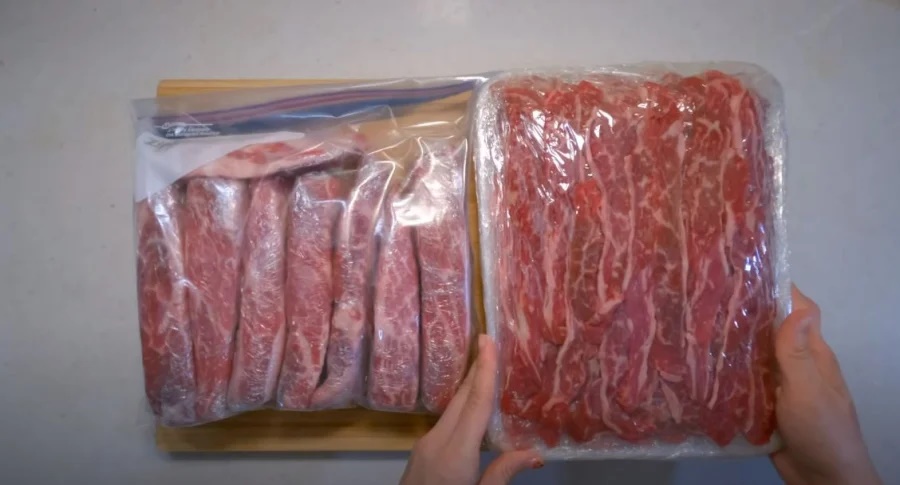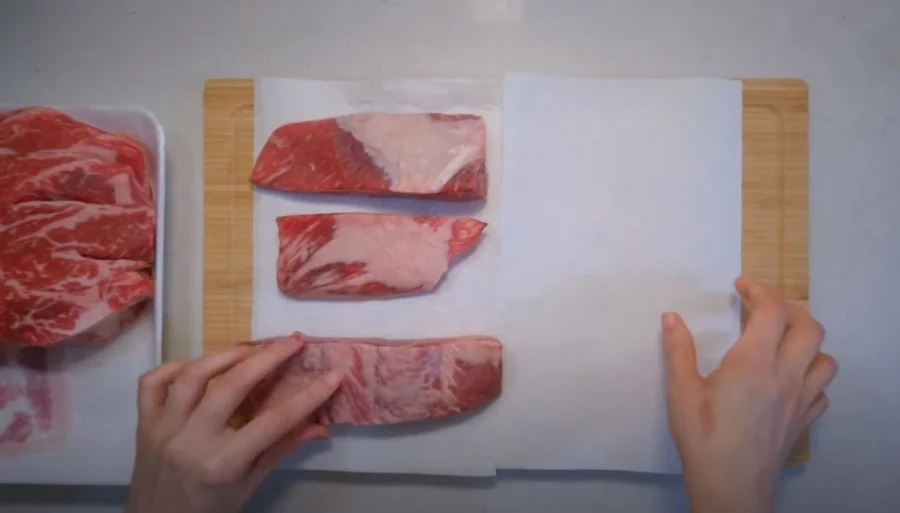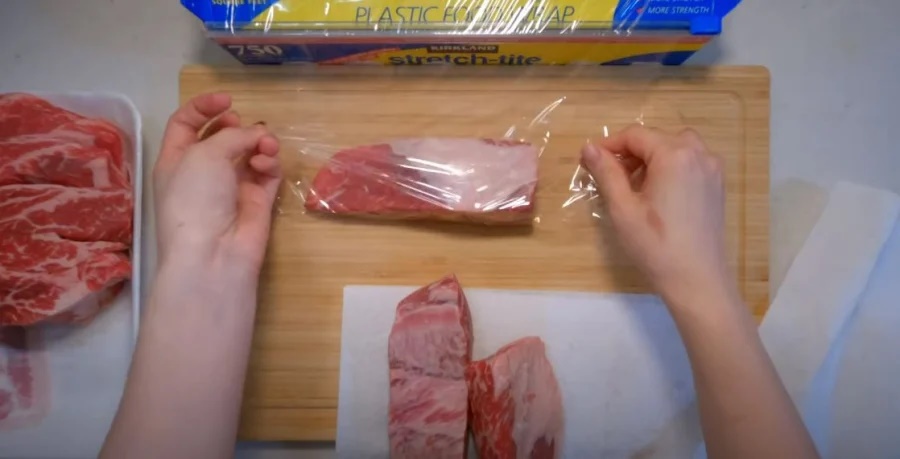How to Store Beef in the Refrigerator
If you plan on cooking beef in the next few days, all you need to do is store the meat in the refrigerator. The meat should be patted dry and then tightly wrapped in plastic wrap to prevent moisture loss. Always place the meat in a container, dish, or on a plate to avoid any meat juice from dripping onto other foods.
 With a refrigerator temperature of about 4-5 degrees Celsius, you can store the meat in the refrigerator for 3-5 days.
With a refrigerator temperature of about 4-5 degrees Celsius, you can store the meat in the refrigerator for 3-5 days.
How to Store Beef in the Freezer
When you buy beef, it’s best to divide it into portions that are suitable for one meal. By doing this, when you want to eat, you just need to take one portion out, and the remaining portions will not be affected.
Use a clean cloth to pat dry the surface of the meat. Do not wash the meat with water as it can allow bacteria to contaminate the meat.

Place the piece of meat on plastic wrap and use a brush to coat it with cooking oil or olive oil on all sides. The oil will create a protective barrier that helps retain moisture in the meat and prevents bacteria from growing to a certain degree. Wrap the meat tightly with plastic wrap, pressing out all the air.

Put the meat in a container with a lid or a sealed ziplock bag and place it in the freezer. When you need to cook the meat, take out one portion and let it thaw slowly in the refrigerator overnight.
How to Store Cooked Beef
For cooked beef, you should only keep it in the refrigerator for about 1-2 days. Note that the meat should be stored in a container with a tightly sealed lid to avoid cross-contamination with other foods. Raw and cooked meats should be kept in separate areas of the refrigerator.
Tips for Choosing Fresh Beef
Observe the color and shape
Fresh beef will usually have a vibrant red color. On the other hand, fake beef (often made from pork, treated with additives to mimic the color and smell of beef) will be sprayed with beef blood to create the color. Some sellers may also apply unknown sources of coloring on the meat to make it look like beef.
When buying meat, you can touch the surface of the meat with your hand. If your hand gets stained with color, it is a sign that the meat has been dyed.
Additionally, you should look at the meat fibers. Real beef will have small, long, and fresh-looking fibers. The fat and skin of real beef will have a pale yellow color. Fake beef made from pork will often have large and short fibers. The fat and skin of pork will have a white color.
Check the meat’s elasticity
When buying any type of meat, you should also check the elasticity of the meat. Press the meat with your hand and observe. Real beef will be tender and have good elasticity. When you touch the meat, it should not feel sticky.
Fake beef made from pork will feel soft when touched, and the meat will not stick to your hand.
Source: Giaitri.thoibaovhnt
Tips for Prolonging the Life of Refrigerator Labels
Are you looking for a way to keep your longan delicious and fresh for a long time? This article provides helpful advice for choosing high-quality longan and correctly storing it in the refrigerator for year-round enjoyment.
Is Refrigerated Leftovers Linked to an Increased Risk of Cancer?
Dr. Lam Van Man, Head of Research, Development and Technology Transfer Department of the Institute of Safety Food, has warned of the risk of food poisoning when reheating leftovers from the refrigerator. But what should we be aware of when it comes to the possibility of these leftovers causing cancer? Here, we explore what the experts have to say on the matter and offer some tips for safe eating.














